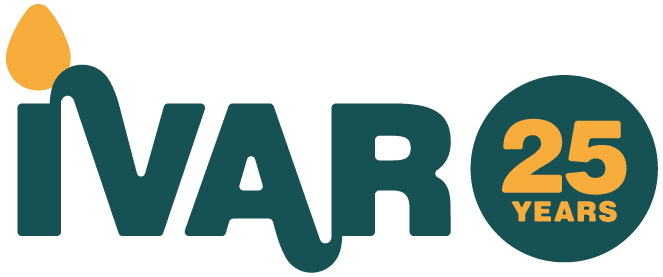By Alexandra Parker
Of all the Open and Trusting commitments, it’s ‘accept risk’ that most often sparks discomfort and uncertainty. Attitudes to risk are one of the biggest barriers to funders moving towards more equitable, charity-led grant-making.
So this statistic – drawn from funders who used IVAR’s risk tool – is striking:
For two thirds of funders, less than 2% of grants they make are considered risky.

When so few grants give rise to concerns, it begs the question – are funders taking as much risk as they think they are, or does taking an open and trusting approach help manage risk more effectively?
Having more conversations about risk, asking the questions that it raises and discussing what we really mean by risk is crucial to unblocking it as a barrier. Because taking good risks can also be an opportunity for innovation, reward and reaching underserved communities. This is why we developed a risk tool (published in May 2025) to help funders think differently about what risk in grant-making means to them and whether their practice reflects their appetite.
Here are five observations from the tool (collected from 30 users between May and October 2025) which shows that these funders are open to managed risk-taking, willing to question assumptions, and curious about risk’s role in achieving impact.
Five observations
1.Funders are starting to have nuanced conversations about risk
While discussions have long focused on potential pitfalls of individual grants (e.g. Is this organisation financially viable? Are the project’s goals realistic? Could it undermine our reputation as a funder?), half of respondents also described wider conversations about risk tolerance, sector resilience, and responsibility-sharing. These conversations are beginning to reshape perceptions of ‘what good risk looks like’, even where formal definitions don’t yet exist. One funder noted: “We decided to stick with [a grantee] and help them improve – recognising we were taking on risk doing so.”
While most funders do not have a written definition of risk in grant making, one that did stood out for including both the positive and negative aspects of risk taking: ‘Risk’ is used to describe uncertain events, and their outcomes that have a significant impact, either enhancing, inhibiting and/or compromising any area of our charity’s activities’.
2. Funders are seeing the up-sides of calculated risks
Nearly half of funders scored themselves as having a ‘higher risk appetite’ on some or all criteria. This can mean a loosening of the reins around some aspects of due diligence and a willingness to act as an initial funder. For many, flexibility was not seen as a loss of control but a way to share responsibility more fairly and build trust. One responder explained:
“We try to work constructively with grantees and use our expertise to make constructive suggestions and offer guidance. [We] encourage them to proactively inform us of anything that could impact their delivery during the lifetime of the grant. “
There was a frequent recognition that ‘failure’ is of value if funders and organisations are willing to learn and adapt: “[we] focus on learning and potential impact rather than expecting everything to be proven in advance.”
Proportionality cropped up time and again, suggesting funders are open to shouldering more considerable risk with new and smaller organisations: “Given the nature of some of the grassroots organisations we work with, we do not employ stringent processes to ensure their financial viability.”
3. But some are keeping a closer hold on reputation and safeguarding
Relationship management within corporate foundations took on a higher degree of scrutiny and perhaps less openness. This sometimes came down to a fear of reputational damage.
“There is concern around funding projects engaged in advocacy, particularly in areas where there might be some crossover with the company e.g. the environment. Organisations/projects which engage in advocacy are scrutinised to a greater degree at the application stage.”
Safeguarding is another area where many funders manage risk, with some using a proportional response:
“We assess the level of safeguarding risk of each grant we consider making in a tailored way depending on the level of vulnerability of people involved and the nature of the organisation and its work. For those which have higher safeguarding risks we may build in more engagement with them on this during the grant proposal and during the life of our relationship. But we convey that this is to support our learning about them and about good safeguarding practice.”
Conversely a few funders feel that the responsibility of safeguarding falls squarely with the organisations they fund and take a very hands-off approach: “We tend to delegate this totally to grantees,” noted one.
4. Many are shifting from outcomes to learning
Many in this group of funders are moving from requiring grantees to report on predetermined outcomes towards a focus on gaining insights and learning. This means putting less emphasis on attributing bespoke outcomes to a specific grant, and more interest in learning from both successes and failures. They said they were minimising the amount of quantitative information collected and introducing learning questions to understand their wider contribution. “If things don’t work out, we don’t stop funding. We are open to understanding why.”
Encouragingly, most recognised opportunities for learning for both the organisation and the funder, even where there may be failure to achieve certain defined end results. Only one respondent overtly talked about terminating a grant where outcomes were not met.
5.Most discussions remain behind the scenes
Many respondents identified standard processes for discussing risk on individual proposals or grants. These included Red-Amber-Green (RAG) rating reports for Trustees, and bespoke sections on assessment reports of key risks and any proposed mitigations. Being explicit in these internal documents, one noted, “is a good way for trustees to be live to the risk and how we approach and mitigate this and to give them ‘comfort’ with us being able to fund things that may be higher risk where we can show the case for this.”
Most also talked about what and how they communicate with individual applicants or grantees. Many said they address risks overtly during proposal discussions or assessments, others said they encouraged grantees to flag concerns: “We want grantees to be comfortable telling us when things don’t go as well as expected or when challenges happen and we try to convey this when we make a new grant. We are aware it is not always easy to tell a funder about this, but we do explain that it is because we want to be supportive if we can and to learn.”
Few funders explained how they make their attitude to risk explicit to those applying for funds although several respondents highlighted the Open and Trusting section of their websites which provide information on their approach to risk. Others said their attitude to risk was implicit in their funding strategies. More could be done to communicate clearly and openly with grantseekers about risk attitudes.
What conversations about risk are you having?
The findings from our early users of the risk tool suggest that there is appetite and potential for a more balanced, nuanced approach to risk in grant-making. While funders remain understandably cautious about areas like safeguarding and reputational harm, many are also beginning to reframe risk as a shared endeavour and a catalyst for learning, innovation, and equity.
This conversation feels especially urgent in the current climate. Charities led by racialised communities, and those rooted in under-invested or deprived areas, continue to report persistent barriers to accessing funding – including being perceived as “higher risk”. At the same time, our opening statistic shows that, for two thirds of funders using the tool, fewer than 2% of grants were actually considered risky. That gap between perceived and actual risk suggests there is space – and need – for funders to be more intentional about how risk judgements are made, and who they affect.
Importantly, risk doesn’t have to be a barrier to Open and Trusting grant-making – it can be a gateway. The challenge now is to build on this momentum: to keep asking what good risk looks like, to make risk appetite visible and proportionate, and to hold space for the conversations, uncomfortable or otherwise, that help to grow confidence and accountability. Because in the end, risk in grant-making is unavoidable, but embracing the right kind of risk can lead to incredible reward for funders and the voluntary sector.




